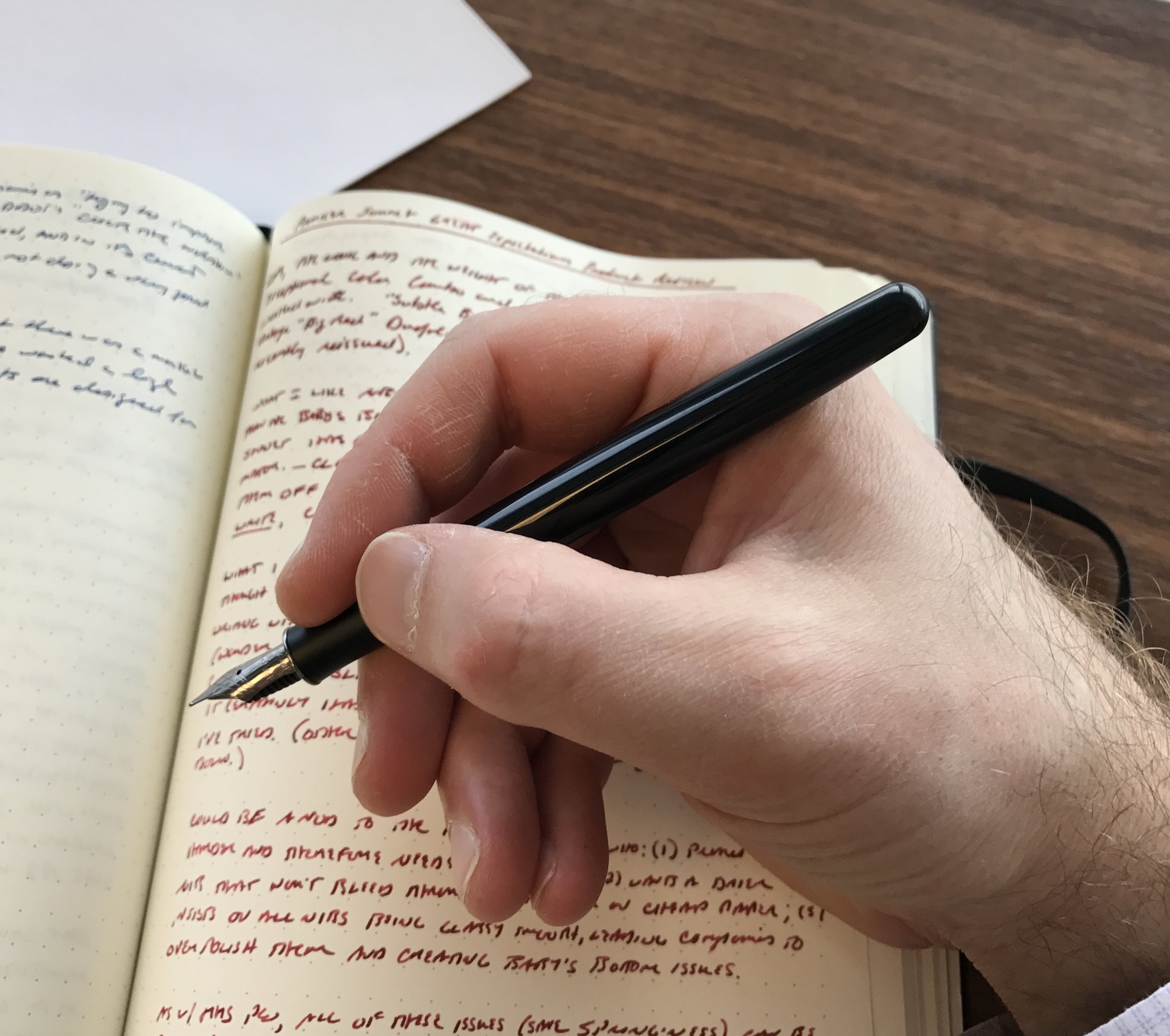I’m making more of an effort to sort and organize my pen collection these days. After a decade in the hobby, I’ve accumulated a lot, with varying degrees of intention. While I’m far from a single-purpose collector - for example, I don’t have a specific pen or brand that I collect exclusively - I do have several major themes around which I’ve build an eclectic group of pens. I’ve written about a few of these before: I have a soft spot for “near-vintage” Waterman, as well as celluloid pens in general. Neither is a particularly surprising focus for someone seriously into fountain pens, and wouldn’t appear out of place at a pen show or meetup. What is surprising, however, even to me, is the extent to which I’ve built up “mini collections” of under-appreciated pens that don’t attract much attention as everyday writers, much less the focus of collections. One such pen is the Parker Sonnet.
I currently only have three Sonnets in my personal collection, though I’ve owned many more. Why do I like this pen so much? For one thing, I consider the Parker Sonnet to be a modern classic. It’s been around for decades now, and the shape recalls the vintage Parker Vacumatic Majors from the 1930s. Vintage Vacumatics are among the most comfortable pens to write with - they fit the hand well when posted, as does the modern Sonnet. While Parker (rightfully) has taken flack over the years for allowing quality control to slide, a properly tuned Sonnet nib makes for an exceptional everyday writer, and the most recent Sonnets I’ve acquired have written perfectly out of the box. (I will note that these have been the gold-nib versions. I cannot speak to the steel.)
Sometimes a brand’s heritage isn’t immediately obvious. Parker has never “reissued” the Vacumatic - at least not to my knowledge - but a similar writing experience lives on in the Sonnet.
Building on the piece I wrote last week, which offered my first impressions of Parker’s recently released “Next Generation” Parker 51, I do believe that the level of vitriol directed at the modern Parker Pen Company is unwarranted and unfair. Sure, much of it can be written off as your typical internet snark, but even setting that aside, people really seem to relish hating Parker, and hold it to a much higher standard than other companies. For example, I’ve not found Parker nibs to be less reliable than those released by Visconti, which often charges twice as much money. A Parker Sonnet with a gold nib will run you anywhere from $250-400, with the higher end of that price range covering the chiseled sterling silver models. Even if you factor in $20-25 for a nib tuning, I have a hard time viewing the Sonnet as a bad value, especially given that you can often find them on sale or the secondary market. Hunting Sonnets at pen shows can be especially rewarding, as many people pass them up in favor of trendier pens and vendors are often willing to unload them at a discount. (Side Note: A few years ago, I criticized Parker for trying to push up the retail price of the Sonnet to its current level. Given the degree to which pen prices have risen industry-wide over the past five years, this was hasty and probably unfair. A gold nib Sonnet is less expensive than many steel-nib pens these days.)
Currently, the Parker Sonnets in my collection include two pens from the now-discontinued “Great Expectations” special edition series: the “Subtle Big Red,” which I previously reviewed, and another matte black version which I believe was called “Secret Shell Black.” Just recently I also added the “SE18 Journey Blue” pen to my collection, which was the last one in stock at Appelboom and seems like it will make a nice companion to my Traveler’s Notebook. The extra fine 18k nib is sublime.
If I must say so, the blue “Journey” looks good on the blue Traveler’s Notebook!
I’m interested in hearing more about this concept of “mini-collections.” Do you all have any side interests apart from your primary focus (if you collect at all)? In addition to the Sonnets, I have managed to get my hands on all of the special Lamy 2000 releases (with the exception of the red one that cost like $18,000), most of the Lamy Studio special releases, and a handful of Leonardo Momento Zero Grandes. The fascinating part about this for me, personally, is that it was largely unintentional, and as I focus on paring down my pens going forward, I may see what happens if I do spend some time focusing more on the “collecting” aspect of the hobby and building out some of these interests. (While still using my pens, of course!)
The SE18 “Journey” edition spoke to me because I have a degree in international relations/foreign service, so while the etching might be considered superfluous or even “too busy” to some, I like it.




